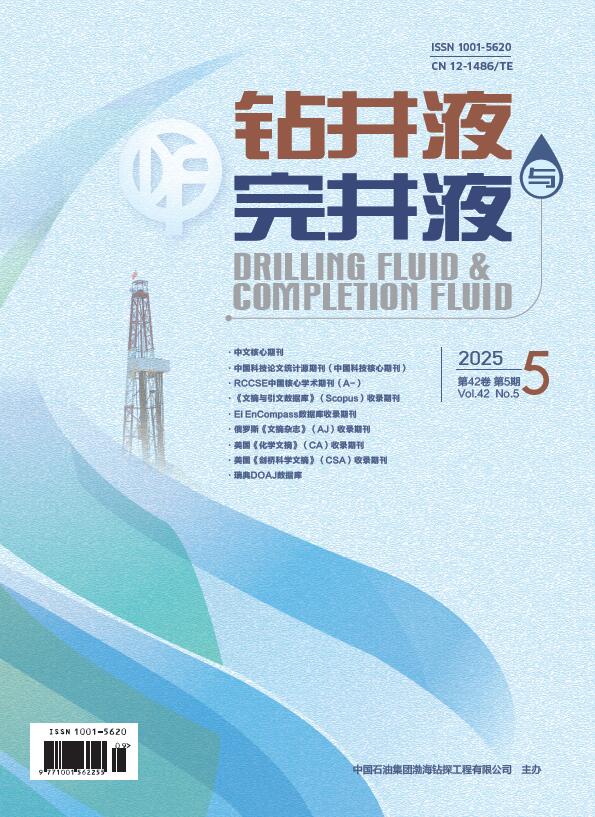Abstract:
A low molecular weight polymer filtrate reducer PANAD was developed to overcome the disadvantages of conventional filtrate reducers use in deep and ultra-deep well drilling, such as poor stability at high temperatures, poor resistance to salt contamination and excessive impact on the rheology of drilling fluids. The PANAD was synthesized through chain transfer reaction with several monomers such as 2-acrylamide-2-methylpropanesulfonic acid (AMPS), N, N-dimethyl acrylamide (DMAM), N-vinyl pyrrolidone (NVP) and dimethyl diallyl ammonium chloride (DMDAAC). 2,2-azobis,2-methylpropylimid, dihydrochloride was used as chain initiator. PANAD functions normally at elevated temperatures,up to 230℃, and high salinity,up to 20% salt concentration). The optimum synthesis conditions determined by orthogonal experiment are as follows, molar ratio of DMAM:AMPS:DMDAAC:NVP=7:2:2.5:1, reaction temperature=65℃ and concentration of initiator=0.7%. The intrinsic viscosity of PANAD 58 mL/g, as determined by "one-point method". The molecular structure and thermal stability of PANAD, as characterized by FT-IR and thermalgravimetric analysis, showed that PANAD had excellent thermal stability, with its chain pyrolysis temperature of 314℃. Test of the filtration control performance of PANAD showed that PANAD worked normally in water base drilling fluids at a maximum temperature of 230℃. Aged fresh water base and 20% saltwater base drilling fluids treated with 1% PANAD had API filtration rate of 8.9 mL and 22.5 mL, respectively. Filtration rate of fresh water base drilling fluid at 180℃ was 35.6 mL, a better filtration control performance than Driscal D. PANAD has very weak effect on the rheology of the drilling fluid before and after aging at 230℃. The mechanisms of filtration control of PANAD was analyzed through zeta-potential measurement, adsorption test and SEM analysis.



